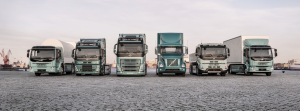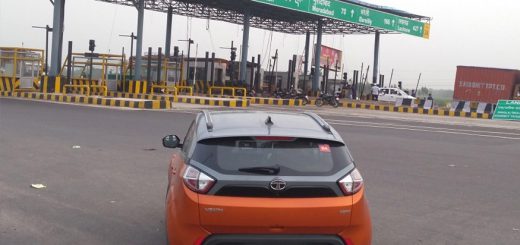Roadmap to Innovation: How electric trucks can transform the trucking industry in India
The transport sector has been integral to the success of India’s economy. About 90% of passenger traffic and 67% of freight rely on road transportation, as per recent data. In fact, the road transport industry is poised to hit $330 billion by 2025, fueled by an impressive 8% CAGR over the next three years.
However, the environmental impact of vehicles on Indian roads, especially trucks, calls for thoughtful consideration. Indian logistics companies now face a crucial decision on how to approach truck transportation sustainably. Before moving ahead, let’s look at the current scenario and understand the challenges that the overall EV industry is facing.
The projected adoption rates for electric commercial vehicles present an interesting outlook for the future, with light trucks and buses expected to see significant growth. By 2030, it is estimated that approximately 20-25% of all commercial light trucks and 15-20% of buses will have transitioned to electric power, resulting in an impressive fleet of around 930,000 light commercial electric vehicles and about 175,000 electric buses.
While these figures indicate substantial progress towards a greener and more sustainable transportation sector, it’s worth noting that the adoption of electric vehicles for heavy trucks has been relatively slow worldwide. Despite the rapid advancements in electric vehicle technology and the increased focus on eco-friendly solutions, heavy trucks seem to face unique challenges in their electrification journey.
Revving Up EV Adoption: Tackling Price Obstacles in the Indian Market
One of the biggest challenges is the elevated prices of electric vehicles (EVs). This is primarily attributed to two key factors: the expensive battery technology and the heavy legacy chassis structures. These elements result in a higher kilowatt-hour (kWh) per kilometer range, falling short of the optimal levels desired for widespread adoption. On top of that, commercial electric vehicles (ECVs) face a significant hurdle with substantial upfront purchase costs, particularly when it comes to the battery packs, which exceed a whopping 180 USD per kilowatt-hour.
While the EV market has experienced impressive growth in the last few years, it’s also important to acknowledge that the numbers remain relatively modest. In 2020, around 119,000 EVs were sold, and this figure rose to 311,000 in 2021 and 419,000 in 2022. However, these figures pale in comparison to the staggering count of 63 million non-electric vehicles in the same period. Over the past four years, EV sales in the country only amounted to 1 million units. This stark contrast underscores the pressing need for more concerted efforts to accelerate the adoption of electric vehicles and bolster their market presence in India.
Government’s Bold Incentives and Policies for EV Growth
With a target to achieve 30% electrification of the vehicle fleet by 2030, the government has implemented various incentives and policies to support the growth of the EV industry. In the Union budget for FY24, the EV sector received a substantial boost, underscoring the government’s commitment to sustainable transportation.
The budget allocated a noteworthy sum of 5,172 crore rupees (approximately $631 million) to the Accelerated Adoption Scheme for Electric Vehicle Manufacturing – II (FAME – II) program. This initiative aims to encourage and subsidize the adoption of clean-energy vehicles, providing a strong impetus to EV manufacturers in the country.
Moreover, the government introduced the Production Linked Incentive Scheme (PLI) to further support EV manufacturers, incentivizing them to invest in the production and advancement of electric vehicles. These initiatives are part of the government’s comprehensive approach to accelerate the transition to cleaner, greener mobility solutions.

By creating an enabling environment and offering attractive incentives, the Indian government is playing a crucial role in fostering the growth of the EV industry. These measures are not only bolstering the production of electric vehicles but also contributing to a more sustainable and environmentally friendly future for the nation’s transportation sector. As the government continues to prioritize and support the EV ecosystem, the path to achieving its electrification targets by 2030 appears more promising than ever before.
Rising Fuel Consumption: India’s Overdependence on Imported Oil
India sources 88% of its oil consumption. Within the transport sector, freight trucks account for nearly 60% of the total petroleum utilized. Unfortunately, these trucks also contribute significantly to environmental pollution, being responsible for 71% of carbon dioxide emissions, 74% of particulate matter emissions, and 55% of nitrogen oxide emissions from road vehicles.
Researchers have analyzed the viability of battery electric trucks, and the results are promising. The study reveals that electric trucks make strong financial sense across all truck types. Specifically, a 25-ton electric truck, which represents the most commonly used long-haul truck size in India, equipped with a 569-kilowatt-hour battery pack and boasting a 400-kilometer operational range, can achieve an impressive 28% lower total cost of ownership per kilometer compared to a traditional diesel truck.
Electric trucks also offer significant environmental benefits. Considering India’s current grid emissions, they can reduce greenhouse gas emissions by 9% to 35% per kilometer when compared to diesel trucks.
Vantage view
Electric truck operations can become more financially viable in India through the progress of battery technology and cost reductions, coupled with appropriate policies and incentives. By capitalizing on these factors, India has the potential to emerge as a global leader in electric vehicle (EV) production. This transition would not only decrease the country’s dependence on imported oil but also lead to enhanced air quality and a step closer to achieving the goal of net zero greenhouse gas emissions by 2070.
Read more at-https://shorturl.at/jBW18




Recent Comments